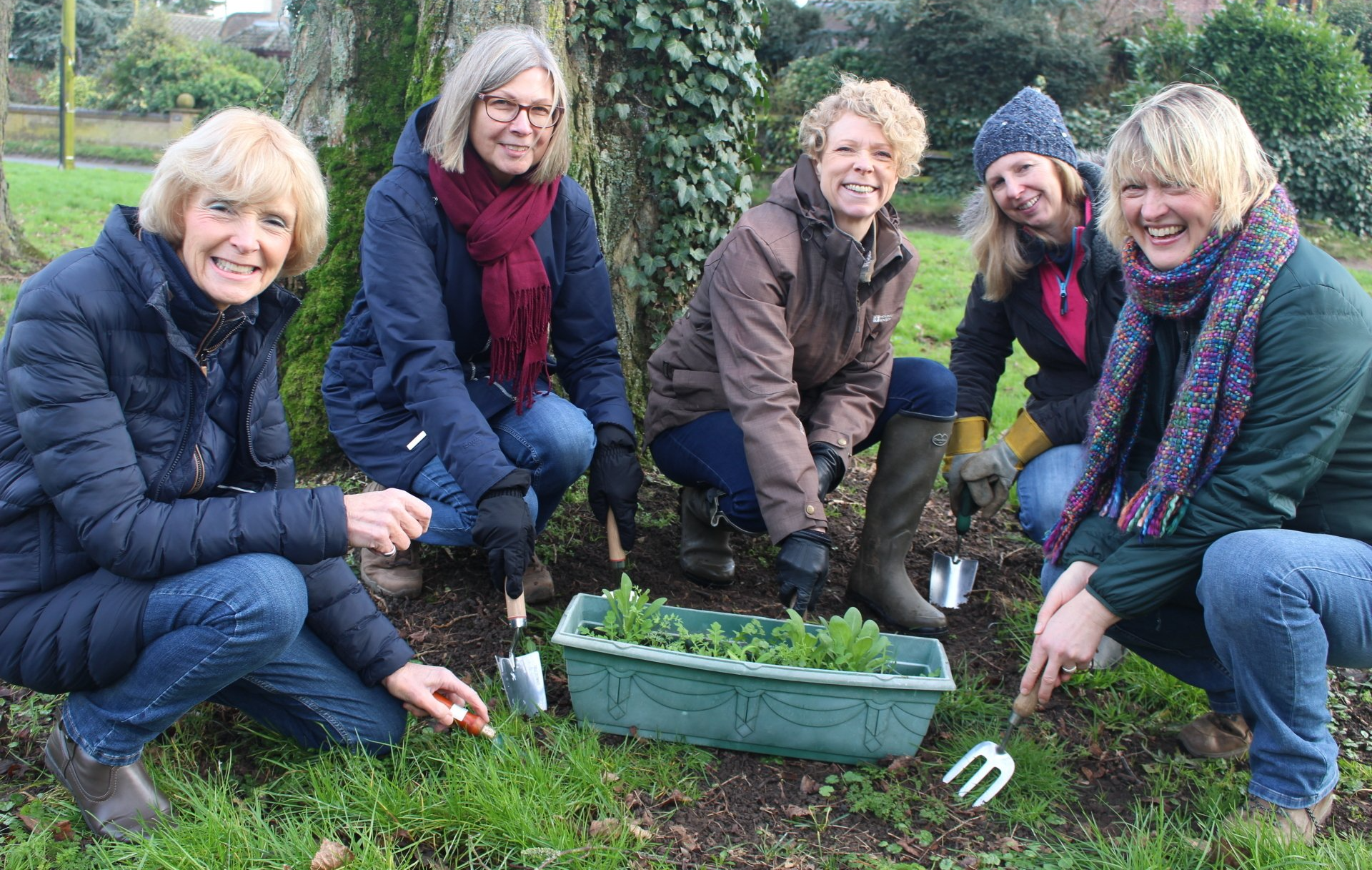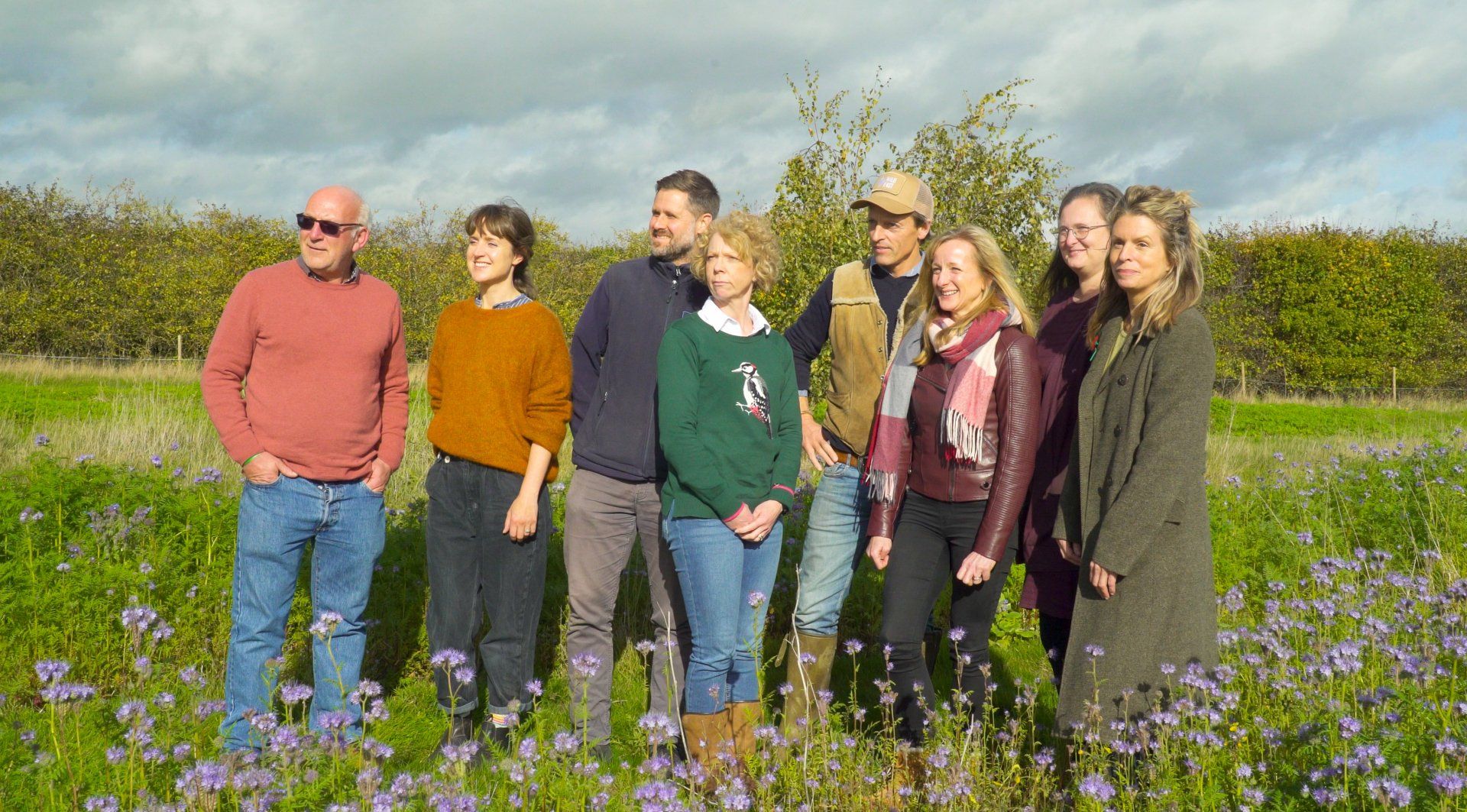ROAR - WildEast Pledgee (Resident)
WildEast's first ever festival ROAR went off with a bang at the start of the month with a packed week of events, talks and panel discussions.
It gave pledgees and supporters the opportunity to come together and learn more about nature recovery.
A central component was a panel discussion hosted by WildEast's Laura Hampton - that brought together a selection of WildEast's exemplar pledgees - including the wonderful Sophie Flux who has written this blog.

If I could sum up my experience at ROAR in three words it would be: inspirational, positive, and exciting! I met so many people doing an array of different things for wildlife: from a garden, to a small holding and a whole parish. Everyone there was doing something positive for nature, and it really highlighted how we are all part of this large WildEast community spanning the entire region. Hearing the other panellists and pledgees talk about the achievements they had made by making a space for wildlife was so up lifting. It was wonderful to listen to their stories about watching the plants, birds, insects, reptiles, mammals etc. return to their communities. These actions that every pledgee was undertaking is creating a movement that will encourage more people and communities to join in and together we can make a future that both people and wildlife can enjoy together.
In 2019 I started a wildlife project in my West Suffolk village called Risby – A wildlife friendly village. The Village Hall committee were fantastic and agreed immediately to give more space for wildlife. I then contacted the Parish Council in the September and they encouraged me to find out if other residents were in support of making more spaces for wildlife in the village. I advertised in the parish magazine and to my delight people came along to a meet up and we planned where we wanted to place wild areas around the village. In the November I gave a report to the Parish Council and with the support of the District and County Councillor we created 11 places around the village at the start of 2020, just before lockdown. Since then we have had different projects come from the actions by the wildlife group, such as artwork around the village placed in the wild area; a litter picking group, who make a huge difference by keeping our village cleaner and tidier; adance group came and created a video around the wild areas and in 2022 we have increased the area with trees and a wildlife spiral to
celebrate the Queen’s Platinum Jubilee.
In the summer of 2020, we were filmed for BBC Countryfile about our project in Risby and from that programme over 70 communities
across the country got in contact with us and told us about what they were doing or wanted to do. With these connections we have shared the most effective strategies to create wild spaces & engage people within our communities. These Wildlife Friendly groups are doing amazing things such as bat walks, planting orchards, planting hedgerows, poetry competitions, apple days, building bug hotels and more. Sharing this best practice has empowered us all to carry on & implement these techniques across our Wildlife friendly communities. There are several Wildlife friendly communities in the WildEast region and at the ROAR day I attended there were representatives from Ludham – A Wildlife Friendly Village: they have been doing fantastic things on the Norfolk broads where they are located, creating new habitats, planting trees, sharing videos and photos of the wildlife they see and also making people aware of the wildlife issues in their area. It is through meeting wonderful people like this, at events like ROAR, and sharing our enthusiasm for wildlife which gives me hope that together we can make the world a better and wilder place.

The WildEast's wonderful new classroom near Fritton Lake served as the venue for the ROAR day. This large room was wallpapered in the most amazing maps designed by WildEast pledgee, Jane Fitzgerald, a gifted Landscape Architect. This classroom, which combines our history, geography, sociology, and ecology all rolled into one, will prove to become a priceless tool for teaching both young and old going forwards. I do not believe that anyone can fail to be inspired when they enter that room and see the fantastic infographics explaining the balance between nature and humans and how we have changed the environment throughout our history. The maps show how our region has been manipulated by people over the last 17,000 years and also shows what could be restored for nature if we all work together using the best methods we have to give space for wildlife.
Sharing best practice methodology is so important, as it enables people to make an effective and practical difference and that is what WildEast needs pledgees to do too. By communicating our individual Wildlife successes, we can collectively develop a Wildlife supportive community, which will create a positive impact. So if you are doing something for Wildlife (such as growing a wild corner or planting a tree or building a mini pond etc.) please share on the WildEast Map of Dreams & explain what is working for you. It is easy to do & will make a world of difference, because when you share you inspire & enthuse others to do the same. Being a WildEast pledgee panellist at the ROAR festival was a pleasure to share what we have done in Risby & I can’t wait to hear what other pledgees are doing where they live because collectively our small individual actions can build a large community that can make the big positive changes needed to create a future that will benefit both people & wildlife in our WildEast.

WildEast Blog

Powered by LocaliQ
Follow Us
SIGN UP FOR NEWS & UPDATES
Newsletter Sign Up
Thank you for signing up to our newsletter.
Please try again later.
Privacy / Terms & Conditions / Sitemap
